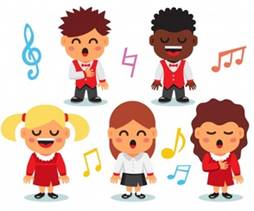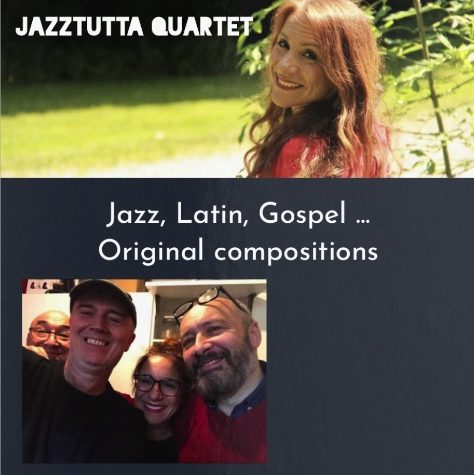Warm-up and vocal exercises
 This phase is a preparation for the practice of singing by making the activity as fun as possible:
This phase is a preparation for the practice of singing by making the activity as fun as possible:
Relaxation and flexibility of the body: “I wake up” – exaggerated stretching and yawning, grimace contests, massage of the cheeks, lips and forehead.
Breath: “smell the rose”, “make the flame of the candle dance” “blow the straw in the glass of water” …
Modulations on syllables: producing sounds “a” “o” “u” “chi” “ji” …
Indicate the tempo and set the tone: the one who guides is immobile. He holds his arms spread in front of him, slightly folded towards his chest. In an attitude of waiting, he captures the attention of children without a word and sings alone the first sentence. He inspires, and at the same time relaxes the arms in rounded movement towards the children: his inspiration gives the start and induces that of the children, then he starts the song of the children: first syllables.
Give expression to the song: face, voice, nuances, implication of oneself.
Exercises: these exercises are performed on ascending and descending scales, arpeggios and rhythmic patterns; the children, each in their turn will sing these exercises which evolve according to the level reached.
Clapping
 Clapping involves hitting rhythms in the hands previously proposed by the facilitator; The goal is to reproduce in a group the same rhythm. Subsequently, a rhythm is kept (usually the one that will be best reproduced) and broken down into a group.
Clapping involves hitting rhythms in the hands previously proposed by the facilitator; The goal is to reproduce in a group the same rhythm. Subsequently, a rhythm is kept (usually the one that will be best reproduced) and broken down into a group.
Stage exercises
A child comes in front and sings a song of your choice that he knows; Aim: to be able to express oneself in public and to sing one’s emotions; which will allow him to discover an aspect of life he did not know before. The other children listen, give their comments and applaud the performance of the child singer.
Voice Interpretation
The child listens to a song and tries to reproduce. He will first “analyze”, “dissect” the song (text, instruments, voice, style, …) and then talk about the song, what does it evoke for him, what does she learn? Aim: express your emotions, express your inner self and share with others what you feel This allows you to think and learn to listen to others.
Choral singing
The children all have the same text and will sing together under the direction of the facilitator. This one sings, the children repeat after him, until the song is learned. They can then sing it with a musical accompaniment.
Goal: this develops a group dynamic, the child learns to operate a group activity.
African polyphonies
An internship with Anita Daulne allowed me to discover and work African polyphonies (many voices) (style of music).
Generally, we start from an African text (basic for children), we work on the text, the rhythm, the voices individually. This leads to a harmonious, original and beautiful result.
Latin rhythms
 With the help of a musical accompaniment, each child is invited to play percussions (djembes, battons, triangles, tambourines, …) it makes the workshop fun, there is a group spirit and a will of s to express is a musical song in itself.
With the help of a musical accompaniment, each child is invited to play percussions (djembes, battons, triangles, tambourines, …) it makes the workshop fun, there is a group spirit and a will of s to express is a musical song in itself.
Improvisation
Can a child improvise? Of course, if guided by the facilitator; he plays an accompaniment, the child sings a melody, the one he will create; the others will be inspired and give their ideas; This leads to a beautiful song that a group of children will create …
In practice, I am open to children’s proposals and ask them what they want to do. From this moment, we start the musical workshop.
Eager to see children blossom in music, I will do everything to make the musical workshop a moment of pleasure, joy, play and memory for the child.
Assunta
